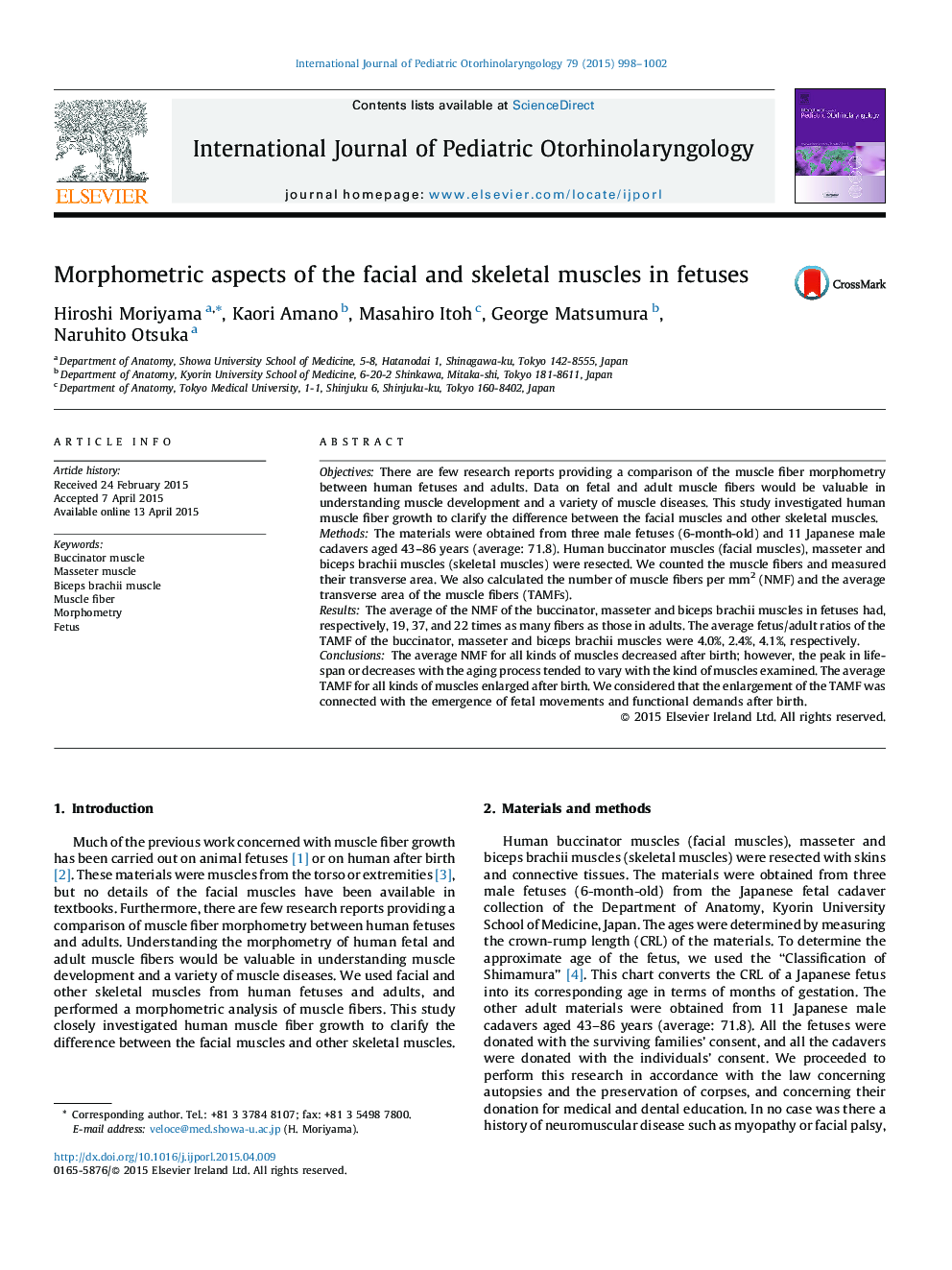| Article ID | Journal | Published Year | Pages | File Type |
|---|---|---|---|---|
| 4112174 | International Journal of Pediatric Otorhinolaryngology | 2015 | 5 Pages |
ObjectivesThere are few research reports providing a comparison of the muscle fiber morphometry between human fetuses and adults. Data on fetal and adult muscle fibers would be valuable in understanding muscle development and a variety of muscle diseases. This study investigated human muscle fiber growth to clarify the difference between the facial muscles and other skeletal muscles.MethodsThe materials were obtained from three male fetuses (6-month-old) and 11 Japanese male cadavers aged 43–86 years (average: 71.8). Human buccinator muscles (facial muscles), masseter and biceps brachii muscles (skeletal muscles) were resected. We counted the muscle fibers and measured their transverse area. We also calculated the number of muscle fibers per mm2 (NMF) and the average transverse area of the muscle fibers (TAMFs).ResultsThe average of the NMF of the buccinator, masseter and biceps brachii muscles in fetuses had, respectively, 19, 37, and 22 times as many fibers as those in adults. The average fetus/adult ratios of the TAMF of the buccinator, masseter and biceps brachii muscles were 4.0%, 2.4%, 4.1%, respectively.ConclusionsThe average NMF for all kinds of muscles decreased after birth; however, the peak in life-span or decreases with the aging process tended to vary with the kind of muscles examined. The average TAMF for all kinds of muscles enlarged after birth. We considered that the enlargement of the TAMF was connected with the emergence of fetal movements and functional demands after birth.
